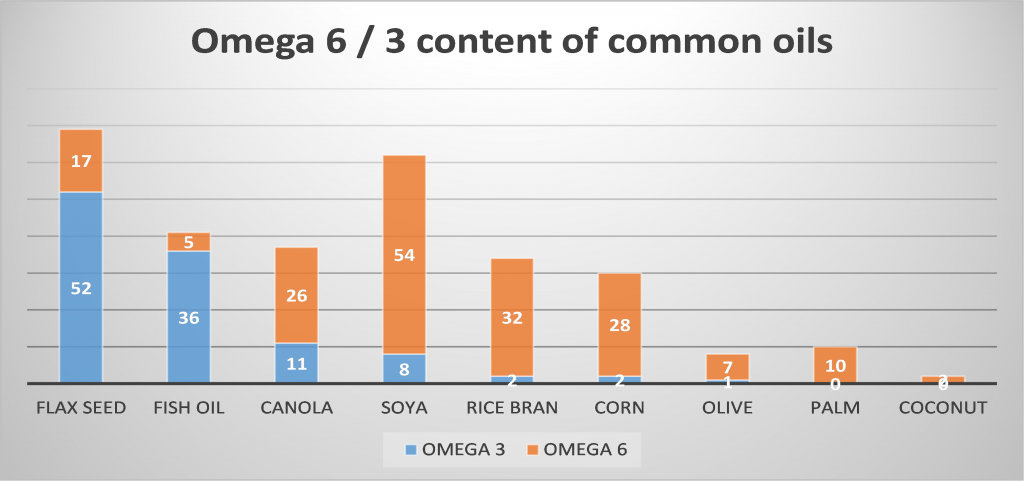At the molecular level fats comprise a glycerol backbone with chains of fatty acids attached. The characteristics of the fat can vary considerably depending on which fatty acids are connected to the glycerol backbone, and whether those FA’s are saturated or unsaturated (saturation depends on how tightly packed the FA’s hydrogen atoms are in the chain, and whether or not double chemical bonds are available). Unsaturated fats can be either monounsaturated or polyunsaturated (the Omega FA’s are polyunsaturated). Polyunsaturated fats cannot be made by the body and must be provided in the diet. They are “Essential FA’s”. The composition of fats is of considerable concern in human medicine where a high intake of saturated fat may negatively influence heart and vascular health, but this is of less concern in horses.
Of far more interest to horse owners is the potential benefit to be gained by manipulating the dietary intake of the Omega 3 and Omega 6 FA’s. Omega 3 FA’s have some properties which make them anti-inflammatory in nature, whereas the Omega 6 FA’s are pro-inflammatory. Cereal grains have a poor ratio of fatty acids with a preponderance of Omega 6, so the aim of supplementation is to redress that imbalance by adding oils with a high Omega 3: Omega 6 ratio. Flax and fish oils are the best for this purpose. The ratio of a few commonly used oils is shown below:
Regardless of the FA content, all oils have the same energy content and are of equal value as an energy source. If that is all that is required, then canola oil is a reasonable choice. However, where horses are suffering from chronic inflammatory diseases such as allergic skin conditions (e.g., Queensland Itch) Chronic Obstructive Pulmonary Disease, chronic Laminitis, or arthritis, then consideration may be given to using a high Omega 3 oil which may provide some small measure of relief and flax seed oil, or fish oil would be preferred.
